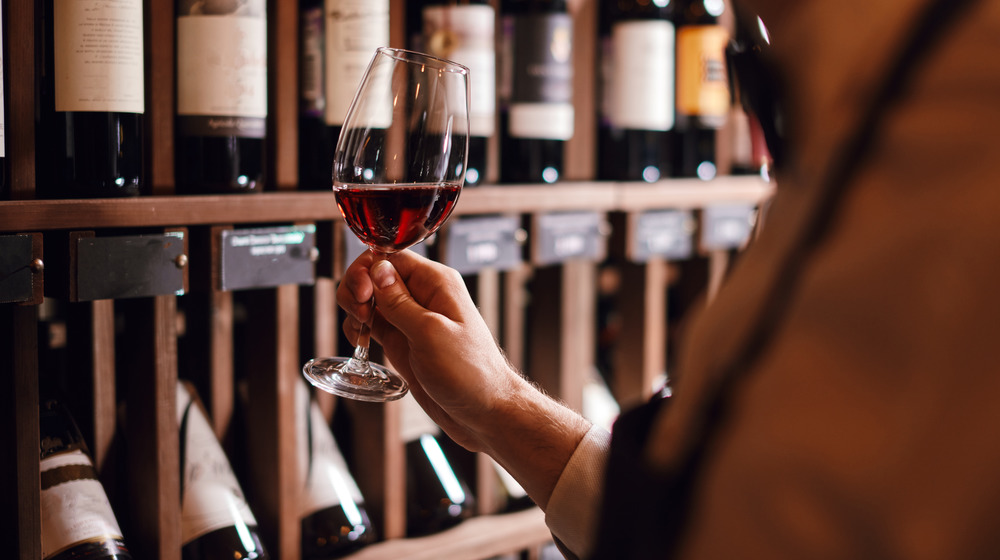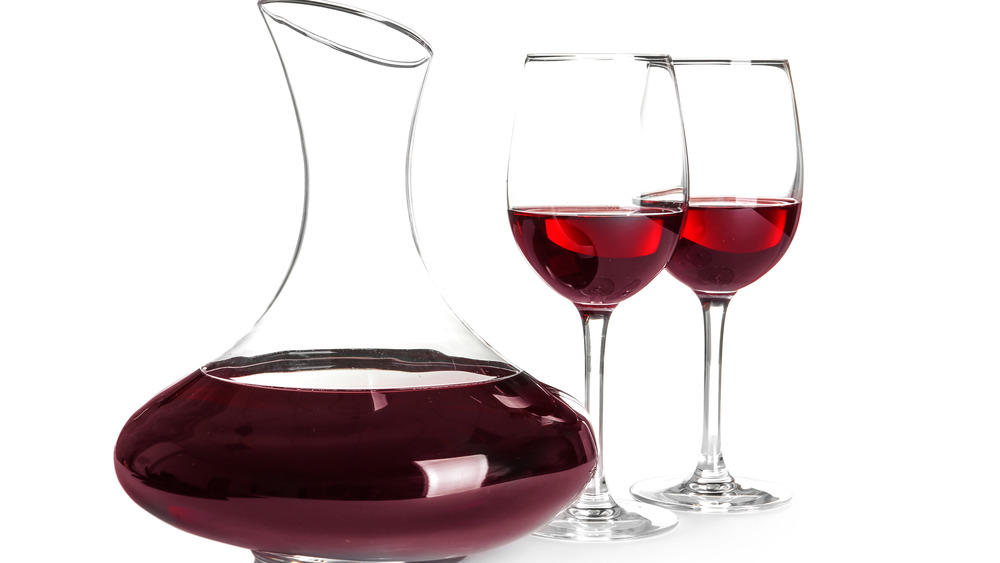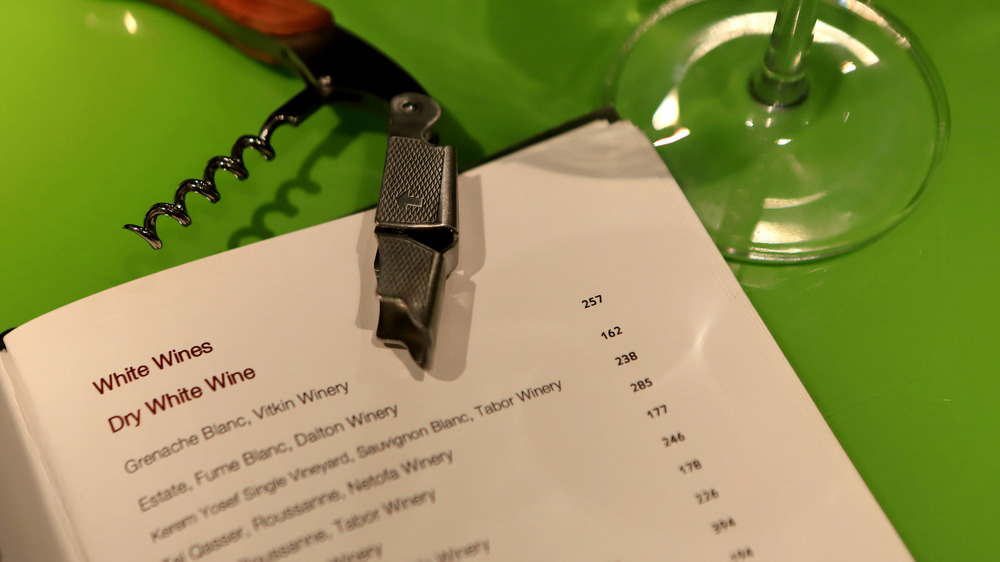Myths About Wine You Can Stop Believing
Wine used to be thought of as something that had a certain sophistication, and wine drinkers were thought to be somehow more "high class" than their proletarian beer-drinking brethren. Well, two 21st century tropes combined to turn that whole stereotype completely on its head: hipster beer snobs and wine moms. Now beer is something you drink if you want to pontificate endlessly about IBUs and mouthfeel and sessionable ales and bla bla bla, while happy hours all over the land are packed with gaggles of giggling girlfriends celebrating "wine o'clock." Meanwhile, deep within a cave in France the last of the old-school oenophiles lurk, waiting and hoping for the whole "rosé all day" thing to die...
Ok, so that's kind of an oversimplification of wine culture. But there's no denying the fact that things have definitely changed — celebrities like Snoop Dogg and Post Malone, neither of whom fits the old stereotype of "wine guy," have released their own wines, and not only is boxed wine no longer looked down upon, but canned wine is a thing, and a pretty popular one, at that. Most of us know that by now, with wine, pretty much anything goes. Just in case you do still feel constrained by certain outdated wine rules, however, we're here to do a little myth-busting so you'll realize, for once and all, that any way you like to drink your wine IS the right way.
The best wines are pricey and exclusive
There is a perception with wine, as with so many other things, that the higher the price tag, the higher the quality. As anyone who's ever plunked down $50+ for a bottle of something that tasted like the dregs of disappointment knows, you don't always get what you pay for. Sure, a bottle of Two-Buck Chuck or Winking Owl probably won't be the finest wine you've ever tasted unless you just got off the farm (Boone's Farm, that is), but you could probably pay a lot more to do a lot worse.
Wine Enthusiast notes that such intangibles as image and celebrity involvement can raise a wine's price without doing much for its quality, but says that often wines from un-trendy areas and lesser-known labels can offer excellent taste as well as value. Argentinian Malbecs, they say, are a particularly appealing budget buy for under $10. They also, surprisingly, endorse some of the wines made by large corporations, saying these aren't always aimed at the lowest common denominator. The biggest producers, after all, have much deeper pockets than do most boutique wineries, so they can afford the wine-making talent as well as all of the state-of-the-art equipment to produce some really excellent wines.
Wine needs to breathe
Is your wine breathing? Better open it up quick to find out. Do you hear it gasping for air? If not, there's only one thing to do — start the mouth to mouth resuscitation! (Insert rimshot here). Seriously though, there really is no need to pour your wine into an oversized glass or a decanter to give it some air. It has no lungs, it doesn't need any oxygen to survive.
According to Cable Wine Systems, the whole breathing thing got started when winemakers of bygone days would use sulfur as a preservative and to help accelerate the aging process. You would then need to open the wine a few days (not minutes or even hours) before drinking it in order to let that rotten egg stink dissipate. Modern winemaker techniques, as well as the fact that transportation is obviously much quicker than back in the horse and buggy days, mean that no more stinky sulfur is needed, so "airing out" one's wine is actually pretty pointless.
Only red wines age well
Red wines, so the story goes, have something we mere humans can only dream of...it is said that they become far more desirable the older they get. White wines, more relatably, are considered over-the-hill in practically no time at all. Wine Enthusiast, however, offers the surprising info that there are also some white wines that actually improve with age, just like well-preserved celebs who have the time and the fortune to devote to the pursuit of eternal youthfulness. Certain dry white wines, as well as Sauternes, German Rieslings, and vintage champagne (a wine that can definitely afford its own personal trainer) may age as gracefully as any red wine.
Cable Wine Systems, however, points out that with most run-of-the-mill wines, red as well as white, aging actually does no favors. (Welcome to our world, wines.) They say that wines are aged before they are released for sale, and that they won't get any better the longer they're allowed to sit.
You should always order the second-cheapest bottle of wine
One rumor that's been making the rounds for years is that the best bottle of wine to order from a restaurant is the second-lowest-priced one on the menu. That way, you don't look like a cheapskate for choosing the cheapest one, but you're also not some sucker who's getting ripped off by shelling out a hundred bucks for a $10 wine. Well, as wine expert Oz Clarke told Mel, there's no need to avoid the cheapest bottle, at least not if you're dining in a decent restaurant. Everything on the wine menu will be good, so even the cheapest "won't be from a crappy wine producer, it'll just come from a less popular or trendy place." In fact, the lowest-priced bottle may not even be the cheapest wine they offer, since it seems restaurants are now onto this second-lowest priced bottle hack and are jacking up the prices on these wines accordingly.
Clarke advises that if you don't know the wine, you order a glass and not a bottle. If you don't like it, that way you're not out a bunch of money and you don't have to force yourself to down several glasses of something nasty. One glass, you can probably hold your nose (figuratively, unless you truly DNGAF) and get it down you. Plus, if you do decide you like it, you can always just order another glass.




